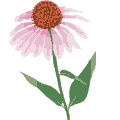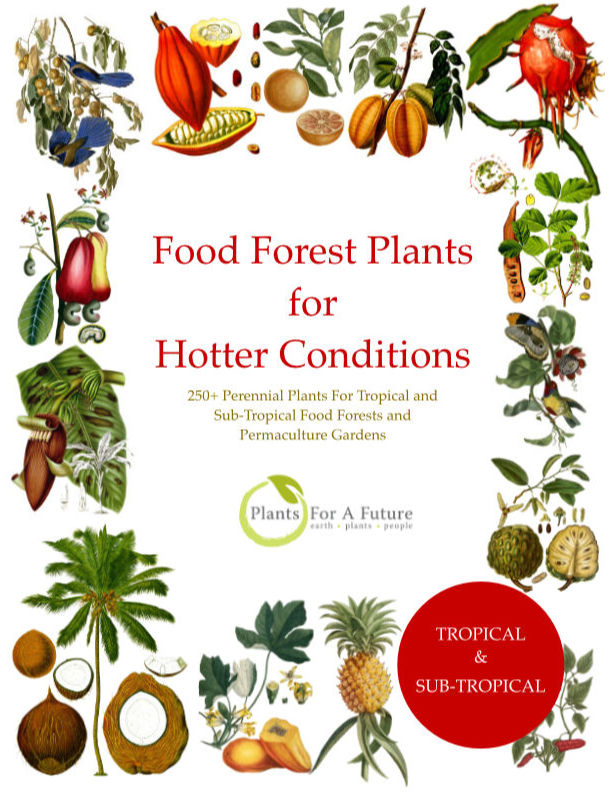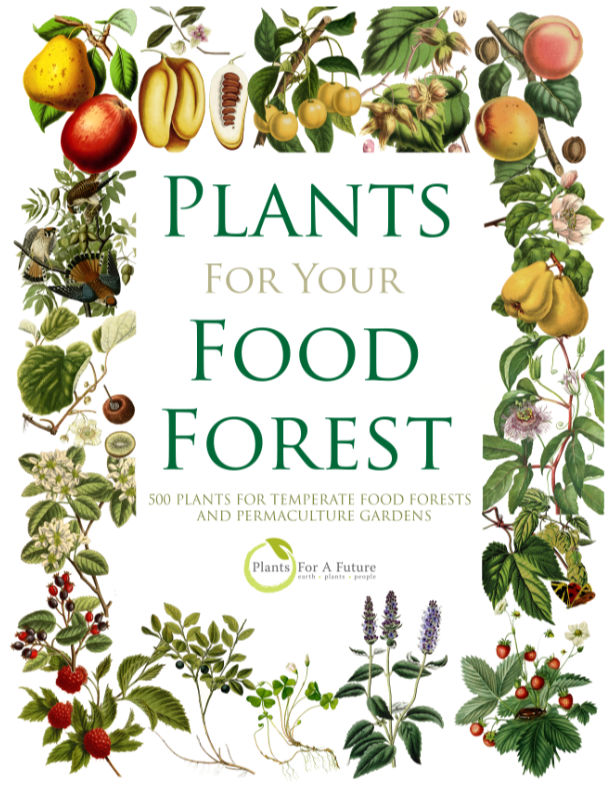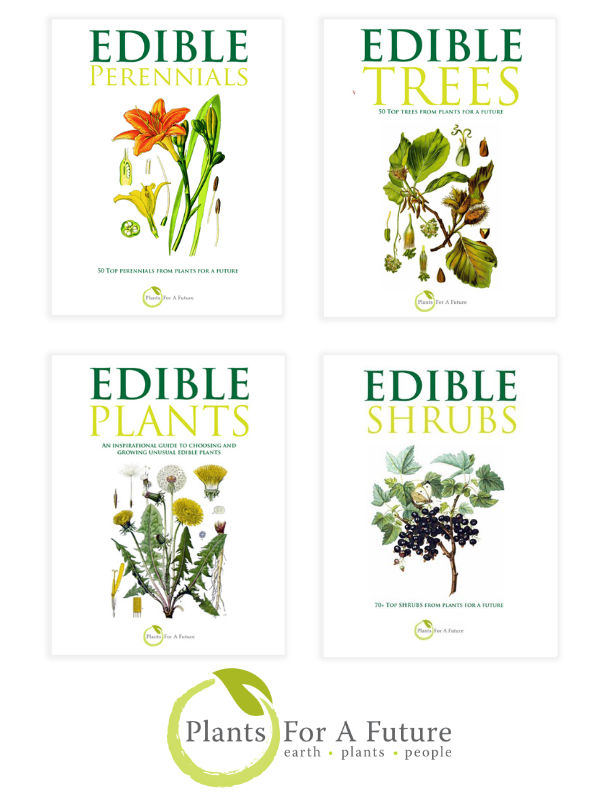Translate this page:
Summary
Ocimum basilicum,
Sweet basil is a versatile herb used for its flavorful leaves, flowers, and seeds. It is popular in many culinary dishes and offers medicinal benefits, particularly for digestive health.
Leaves and flowers are eaten raw or cooked and frequently used as a flavouring in tomatoes, pasta, bean, pepper, and eggplant dishes. The fresh leaves are used in salads or dried for winter use. Cooking the leaves intensifies their flavour. A refreshing tea is made from the leaves. The seeds are eaten raw or added to bread dough as a flavouring. Seeds soaked in water become mucilaginous and are made into a refreshing beverage called ‘sherbet tokhum’. The essential oil is a flavouring in mustards, sauces, and vinegar.
Basil has been used as a culinary and medicinal herb for thousands of years. It is known for its effects on the digestive and nervous systems, helping alleviate flatulence, stomach cramps, colic, and indigestion. The leaves and flowering tops have antispasmodic, aromatic, carminative, digestive, galactagogue, stomachic, and tonic properties.
Basil thrives in rich, light, well-drained soils and prefers a sunny, sheltered position. There are many named varieties of basil, each with its own flavour characteristics. An excellent companion plant, basil attracts pollinators like bees and butterflies.
Basil is native to tropical and subtropical regions but widely introduced and naturalised in many parts of the world, including Mediterranean, arid, and semi-arid areas such as the Canary Islands, Cape Provinces (South Africa), Cape Verde, South Australia, and Sudan.
Harvesting: Late spring to early autumn when the leaves are young and tender. Flowers in mid to late summer.
Bloom Color: Purple, White. Main Bloom Time: Early summer, Late summer, Mid summer. Form: Rounded.
Physical Characteristics

 Ocimum basilicum is a PERENNIAL growing to 0.5 m (1ft 8in) by 0.3 m (1ft) at a fast rate.
Ocimum basilicum is a PERENNIAL growing to 0.5 m (1ft 8in) by 0.3 m (1ft) at a fast rate.
See above for USDA hardiness. It is hardy to UK zone 10 and is frost tender. It is in flower from August to September, and the seeds ripen in September. The species is hermaphrodite (has both male and female organs) and is pollinated by Bees. The plant is self-fertile.
It is noted for attracting wildlife.
Suitable for: light (sandy) and medium (loamy) soils and prefers well-drained soil. Suitable pH: mildly acid, neutral and basic (mildly alkaline) soils. It cannot grow in the shade. It prefers moist soil.
UK Hardiness Map
US Hardiness Map
Synonyms
Ocimum album, Ocimum anisatum, Ocimum barrelieri, Ocimum medium, Plectranthus barrelieri .
Plant Habitats
Cultivated Beds;
Edible Uses
Edible Parts: Leaves Seed
Edible Uses: Condiment Drink Tea
Leaves and flowers - raw or cooked[4, 21, 27]. Used as a flavouring or as a spinach[14, 61], they are used especially with tomato dishes, pasta sauces, beans, peppers and aubergines[238]. The leaves are normally used fresh but can also be dried for winter use[21]. A very pleasant addition to salads[K], the leaves have a delightful scent of cloves[4]. Use the leaves sparingly in cooking because the heat concentrates the flavour[244]. A refreshing tea is made from the leaves[21]. The seed can be eaten on its own or added to bread dough as a flavouring[183]. When soaked in water it becomes mucilaginous and can be made into a refreshing beverage called 'sherbet tokhum' in the Mediterranean[183]. An essential oil obtained from the plant is used as a food flavouring in mustards, sauces, vinegars etc[57, 105, 183]
References More on Edible Uses
Medicinal Uses
Plants For A Future can not take any responsibility for any adverse effects from the use of plants. Always seek advice from a professional before using a plant medicinally.
Antibacterial Antidepressant Antirheumatic Antispasmodic Appetizer Aromatherapy Aromatic Carminative
Digestive Dysentery Galactogogue Malaria Ophthalmic Stomachic Tonic
Sweet basil has been used for thousands of years as a culinary and medicinal herb. It acts principally on the digestive and nervous systems, easing flatulence, stomach cramps, colic and indigestion[254]. The leaves and flowering tops are antispasmodic, aromatic, carminative, digestive, galactogogue, stomachic and tonic[7, 14, 21, 178, 218]. They are taken internally in the treatment of feverish illnesses (especially colds and influenza), poor digestion, nausea, abdominal cramps, gastro-enteritis, migraine, insomnia, depression and exhaustion[238]. Externally, they are used to treat acne, loss of smell, insect stings, snake bites and skin infections[238]. The leaves can be harvested throughout the growing season and are used fresh or dried[238]. The mucilaginous seed is given in infusion in the treatment of gonorrhoea, dysentery and chronic diarrhoea[240]. It is said to remove film and opacity from the eyes[218]. The root is used in the treatment of bowel complaints in children[240]. Extracts from the plant are bactericidal and are also effective against internal parasites[218, 238]. The essential oil is used in aromatherapy. Its keyword is 'Clearing'[210]. In Chinese medicine for kidney disease and gum ulcers [301]. In Indian medicine foe earache, rheumatoid arthritis, anorexia, itching, menstrual disorders, and malaria [301].
References More on Medicinal Uses
The Bookshop: Edible Plant Books
Our Latest books on Perennial Plants For Food Forests and Permaculture Gardens in paperback or digital formats.

Edible Tropical Plants
Food Forest Plants for Hotter Conditions: 250+ Plants For Tropical Food Forests & Permaculture Gardens.
More

Edible Temperate Plants
Plants for Your Food Forest: 500 Plants for Temperate Food Forests & Permaculture Gardens.
More

More Books
PFAF have eight books available in paperback and digital formats. Browse the shop for more information.
Shop Now
Other Uses
Essential Repellent Strewing
Agroforestry uses:
Basil can be used as a companion plant to deter pests and attract pollinators. Its aromatic leaves can also enhance the growth and flavor of neighboring plants.
An essential oil obtained from the whole plant is used as a food flavouring and in perfumery, dental applications etc[46, 57, 61, 105, 171, 238]. An average yield of 1.5% essential oil is obtained from the flowering tops[7]. When applied to the skin it makes a good mosquito repellent[7]. The growing or dried plant is an effective insect repellent. It is a good plant to grow in the home, where it repels flies, or in the greenhouse where it can keep all manner of insect pests away from nearby plants[14, 20, K]. It has been used in the past as a strewing herb[201]. 1. Nectary - Flowers rich in nectar and pollen:
Yes – Basil flowers are known to be attractive to pollinators and can provide nectar and pollen.
2. Wildlife - Food (Fruit, Seeds, Leaf litter, Shelter, Nesting, Roosting):
Yes – The leaves are edible for humans and can attract beneficial insects. While it doesn’t provide much in terms of shelter or nesting, the foliage can offer some cover.
3. Invertebrate Shelter (Overwintering sites, Leaf litter, Groundcover):
No – Basil is not typically used as a shelter for invertebrates, as it doesn’t create significant leaf litter or groundcover.
4. Pest Confuser (Smell):
Yes – The aromatic leaves of basil can help mask the scent of other plants, potentially confusing pests.
Special Uses
Scented Plants
References More on Other Uses
Cultivation details
Landscape Uses:Border, Container, Specimen. Prefers a rich light well-drained to dry soil[1, 27, 238]. Requires a sunny sheltered position if grown outdoors[52]. Tolerates a pH in the range 5 to 8[238]. Sweet basil is commonly grown as an aromatic culinary and medicinal herb in warm temperate and tropical climates. There are a number of different constituents that make up the essential oil in basil, and the proportions of these vary considerably between plants growing in different regions of the world[238]. From this variety many named varieties with differing flavour characteristics have been developed[46, 238]. Basil is a perennial plant in the tropics, but it is frost tender and needs to be grown as a half-hardy annual in temperate zones[142]. It is a very good companion plant to grow in the house or greenhouse, its aromatic foliage helping to reduce problems caused by insect pests[K]. It requires a good hot summer in Britain if it is to do well outdoors[K]. Sweet basil is a good companion plant for tomatoes but it grows badly with rue and sage[14, 18, 20, 201]. When grown near raspberries it can retard their fruiting[201]. Special Features: Attractive foliage, Edible, Fragrant foliage, Not North American native, Suitable for dried flowers, Inconspicuous flowers or blooms. Basil is typically harvested from late spring to early autumn (around June to September in the Northern Hemisphere) when the leaves are young and tender.
Basil flowers in mid to late summer. Basil is a fast-growing herb, usually reaching maturity in about 60 to 90 days from seed. It thrives in warm conditions and can produce a continuous harvest when regularly pruned.
References Carbon Farming Information and Carbon Sequestration Information
Temperature Converter
Type a value in the Celsius field to convert the value to Fahrenheit:
Fahrenheit:
The PFAF Bookshop
Plants For A Future have a number of books available in paperback and digital form. Book titles include Edible Plants, Edible Perennials, Edible Trees,Edible Shrubs, Woodland Gardening, and Temperate Food Forest Plants. Our new book is Food Forest Plants For Hotter Conditions (Tropical and Sub-Tropical).
Shop Now
Plant Propagation
Seed - sow mid to late spring in a greenhouse and only just cover the seed. Germination is usually free and quick, prick out the seedlings into individual pots when they are large enough to handle. If growing basil outdoors, plant out after the last expected frosts.
Other Names
If available other names are mentioned here
Native Range
Andaman Is., Assam, Bangladesh, Bismarck Archipelago, Borneo, Cambodia, China South-Central, China Southeast, East Himalaya, India, Jawa, Laos, Lesser Sunda Is., Maluku, Myanmar, Nepal, New Guinea, Nicobar Is., Philippines, Queensland, Sri Lanka, Sulawesi, Sumatera, Taiwan, Thailand, Vietnam, West Himalaya, Western Australia
Weed Potential
Right plant wrong place. We are currently updating this section.
Please note that a plant may be invasive in one area but may not in your area so it's worth checking.
Conservation Status
IUCN Red List of Threatened Plants Status :

Growth: S = slow M = medium F = fast. Soil: L = light (sandy) M = medium H = heavy (clay). pH: A = acid N = neutral B = basic (alkaline). Shade: F = full shade S = semi-shade N = no shade. Moisture: D = dry M = Moist We = wet Wa = water.
Now available:
Food Forest Plants for Mediterranean Conditions
350+ Perennial Plants For Mediterranean and Drier Food Forests and Permaculture Gardens.
[Paperback and eBook]
This is the third in Plants For A Future's series of plant guides for food forests tailored to
specific climate zones. Following volumes on temperate and tropical ecosystems, this book focuses
on species suited to Mediterranean conditions—regions with hot, dry summers and cool, wet winters,
often facing the added challenge of climate change.
Read More
Expert comment
Author
L.
Botanical References
200
Links / References
For a list of references used on this page please go here
Readers comment